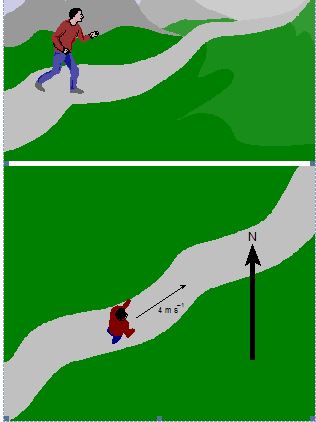Scalar And Vector Quantities With Examples

Quantities in physics can either be classified as scalars or vectors. These classes of physical quantities are usually handled differently when used in numerical calculations. After this write-up, you can explain the concept of scalars and vectors and distinguish between the two quantities.
Many measurable physical quantities we encounter in our study of physics have only numerical values attached to them. Such quantities are completely described when only their magnitudes or sizes are known. Scalars are defined as physical quantities which have magnitude but no direction associated with them.
Thus, a speed of 50kmhr-1 can be measured either on a straight or circular path since no direction was indicated. Ordinary algebraic methods add scalars. Distance, altitude, speed, mass, time, energy, temperature, potential difference, density, area, work, etc. are all examples of scalar quantities.
On the other hand, many other measurable physical quantities have both magnitude or numerical value and direction. Such quantities are not thoroughly described unless their magnitude and directions are specified.
Vectors are defined as physical quantities which have both magnitude and direction. A line with an arrow on it represents a vector quantity. The length of the line represents the magnitude, while the arrow indicates the direction of the vector.
Thus, a displacement is a distance measured in a specified direction, e.g., a bird flies a distance of 100km in a north-easterly direction. Geometrical methods add vectors. Displacement, velocity, acceleration, force, momentum, electric field strength, magnetic field strength, gravitational field strength, etc., are examples of vector quantities.
Read: Fundamental and derived quantities
Questions and Answers
(1) The pair of scalar physical quantities only are {UTME 2013}
A. Impulse and time
B. Volume and area
C. Moment and momentum
D. Length and displacement
Solution
Option A: impulse is vector while time is scalar
Option B: Volume is scalar, area is scalar
Option C: moment is a vector, momentum is a vector
Option D: length is scalar, displacement is vector
B is the correct option
(2) Which of the following consists entirely of vector quantities? {UTME 2001}
A. Work, pressure, and moment B. Velocity, magnetic flux, and reaction.
C. Displacement, impulse, and power. D. Tension, magnetic flux, and mass.
Solution
Vector quantities have both magnitude and direction
Option A – pressure and work are scalar quantities
Option B – they are all vector quantities
Option C- power is a scalar quantity
Option D – mass is a scalar quantity
B is the correct option
